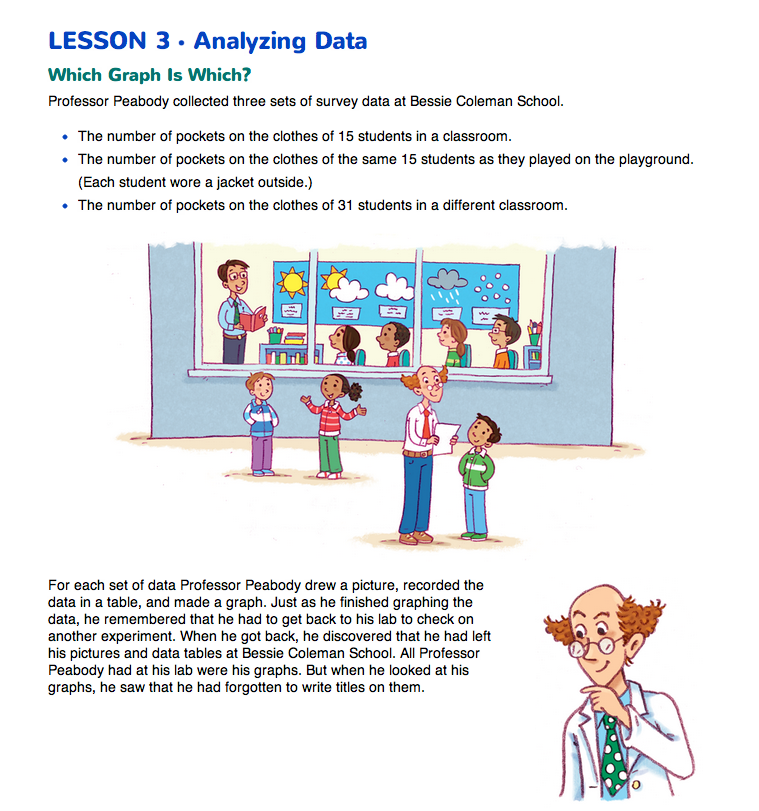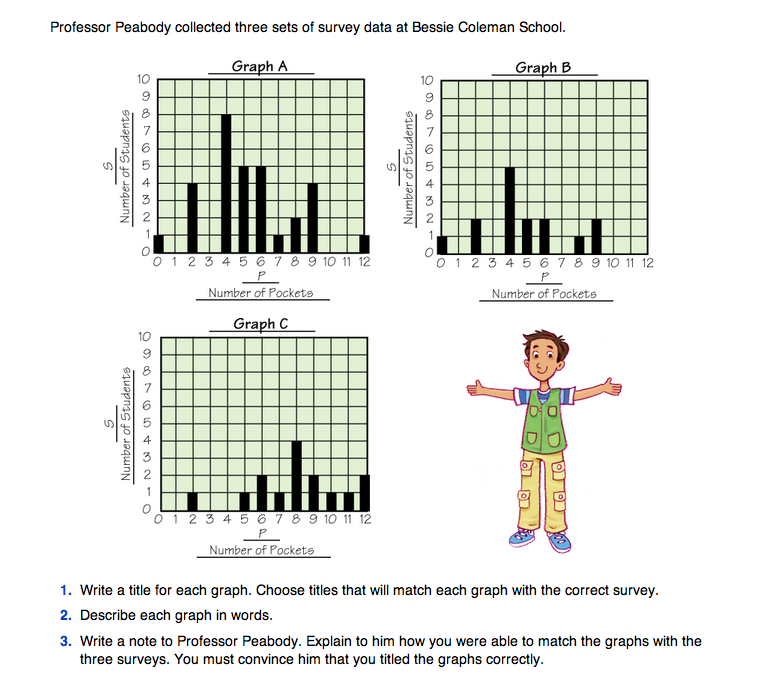Analyzing Data
Est. Class Sessions: 1–2Developing the Lesson
Part 1. Which Graph Is Which
To begin this activity, ask students to read the description of Professor Peabody's problem on the Analyzing Data pages in the Student Guide. The professor has collected survey data on the number of pockets on the clothes of three groups of students, but he has lost his data tables and he forgot to title the three graphs. Ask students to work in pairs to complete Questions 1–3. In Question 1 students match the graphs to the descriptions of each survey and write a title for each graph. As students are working have them discuss how to interpret the graphs. Different students will have different strategies.
These prompts can be used to guide the discussion for Question 1:
In Question 2 students write a description of each graph. Encourage them to use the same language they used in Lesson 1 when they described the Eyelets graphs.
Use the following prompts to help them write about the shape of the graph:
Question 3 asks students to write a note to Professor Peabody explaining how they matched the graphs to the three sets of data. Using the descriptions, they should compare the graphs and relate the shapes of the graphs to the three populations in the data collection.
Have students discuss how to interpret the graphs. Ask students to explain how they determined which graph fit with which survey. Different students will have different strategies. The Sample Dialog provides a model of a possible class discussion about strategies used to interpret and analyze bar graphs.














